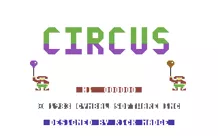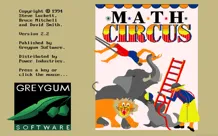Circus
aka:
12. Tivoli,
16 Jeux du Circus,
Cassette 17: Circus,
Cassette 17: Cirque,
Circo,
Micro Processor System Cartridge 13: Circus
Moby ID: 115640
See Also
-
 Circus
(1977 on
Arcade, 1982 on
VIC-20, 1983 on
Commodore 64)
Circus
(1977 on
Arcade, 1982 on
VIC-20, 1983 on
Commodore 64)
-
 Circus
(1982 on
TRS-80, 1983 on
Commodore 64,
Atari 8-bit...)
Circus
(1982 on
TRS-80, 1983 on
Commodore 64,
Atari 8-bit...)
-
 Circus
(1984 on
Commodore 64)
Circus
(1984 on
Commodore 64)
-
 Circus
(1995 on
DOS)
Circus
(1995 on
DOS)
- Circus (2009 on Wii)
Description
Circus is a variant of the 1977 Arcade game. The player controls a springboard at the bottom of the screen and must launch clowns into the air in order to pop balloons. There are sixteen different variations included.
Groups +
Reviews
Players
Average score: 3.0 out of 5 (based on 1 ratings with 0 reviews)
Be the first to review this game!
Analytics
Identifiers +
Contribute
Are you familiar with this game? Help document and preserve this entry in video game history! If your contribution is approved, you will earn points and be credited as a contributor.
Contributors to this Entry
Game added by vedder.
Game added October 27, 2018. Last modified December 15, 2024.







